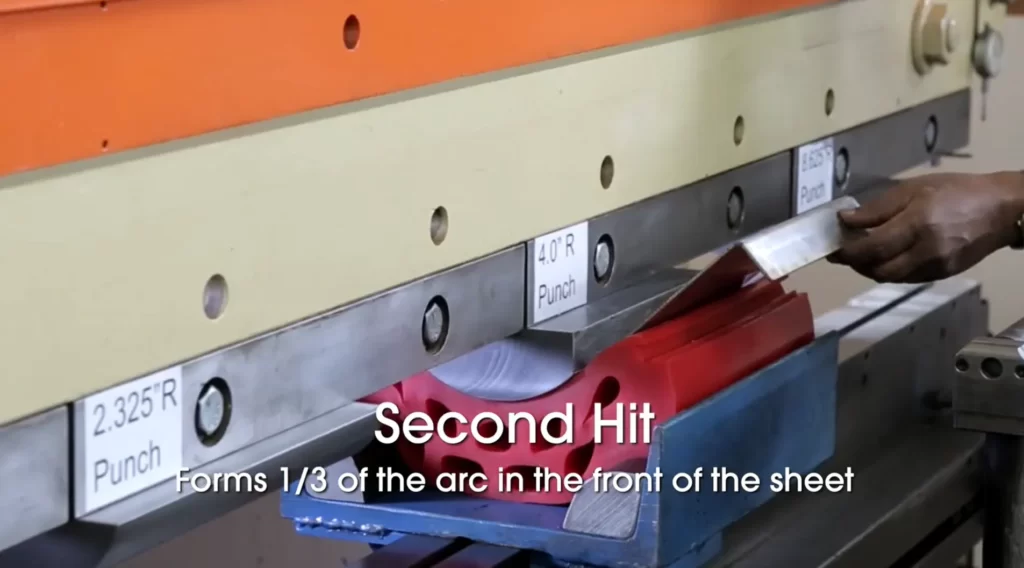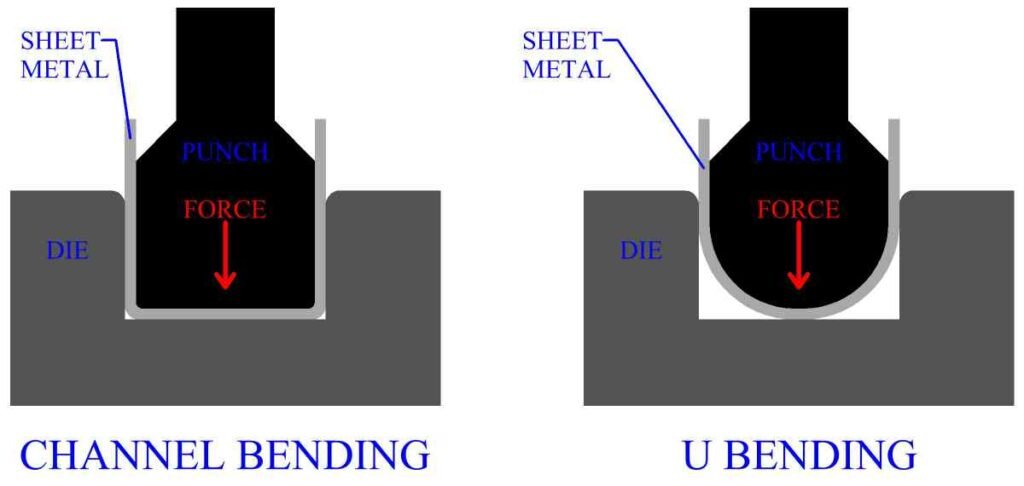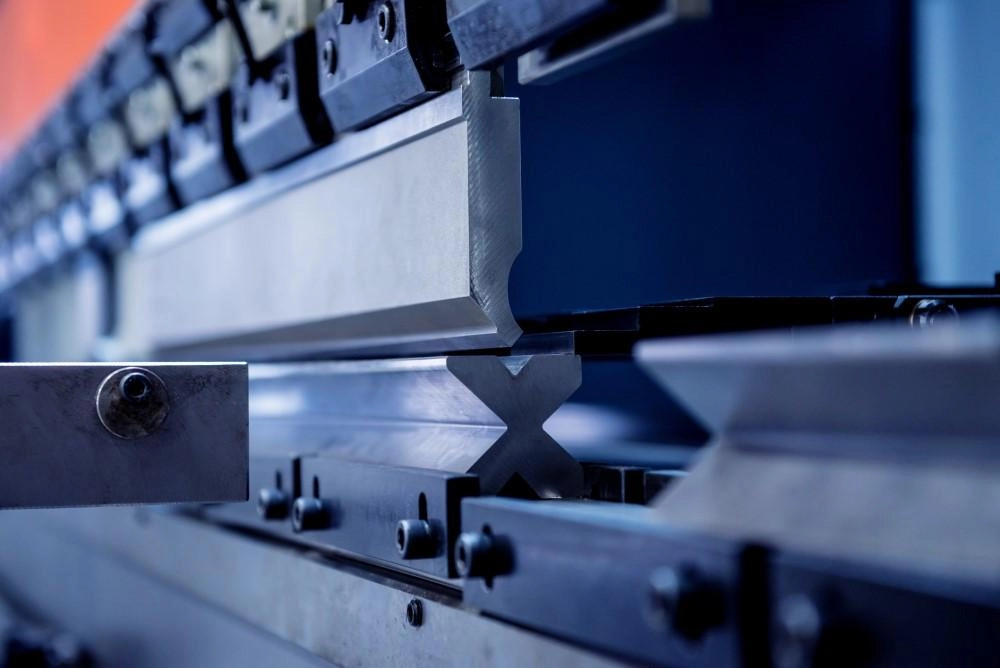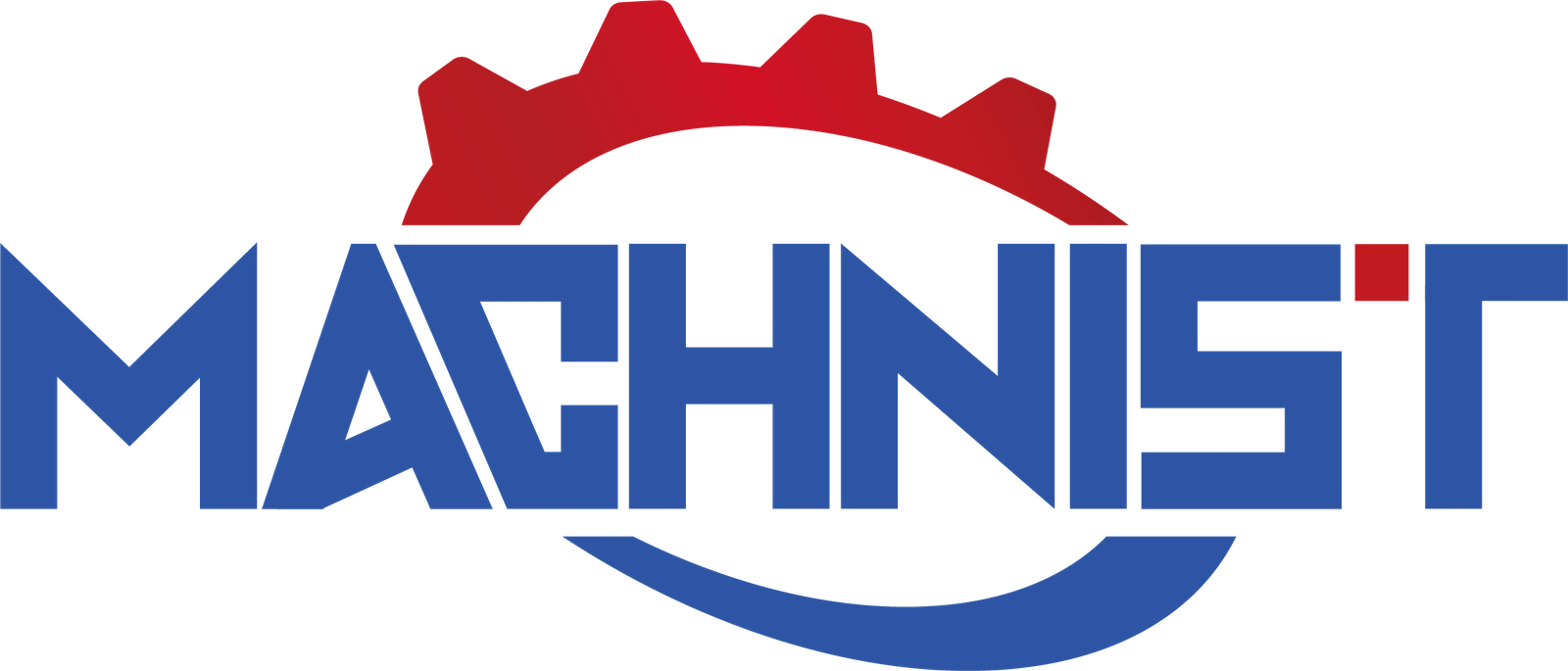
I. Unraveling the Art of Press Brake U Bends
The Basics of Press Brake U Bends
Press brake U bend involves the meticulous bending of metal sheets on the press brake twice or more, crafting them into the distinctive “U” shape. This intricate process hinges on precise control of upper and bottom die closures and strokes, ensuring the final product meets design specifications.
The U bend stands as a cornerstone in metal fabrication industries, finding extensive utility in the production of architectural and structural components, automobile parts, home appliance casings, and items requiring inner spaces, such as piping systems and electrical cabinets. Beyond material cost savings and enhanced production efficiency, U bends contribute to superior mechanical properties and aesthetic quality of products.
History and Evolution of Press Brake Technology
The press brake’s historical roots trace back to early industrialization when manual operation was the norm. Over time, technological advancements, particularly in hydraulic and CNC technology, revolutionized press brake capabilities. U bend technology evolved concurrently, progressing from simple straight-line bending to intricate three-dimensional bending. Modern CNC press brakes, integrated with CAD/CAM software, enable precise control and emulation of U bends, facilitating high-precision and mass production projects.
Evolution of Die Techniques and Assistant Tools
Advancements in die techniques and auxiliary tools, including back gauges and front support devices, further augment the possibilities and adaptability of U bends. These enhancements contribute to the versatility and efficiency of the U-bending process.
II. Technical Dimensions of Press Brake U Bends
Types of Press Brakes for U Bending
Mechanical Press Brake:

Pros:
- Simple structure
- High-cost performance
- Convenient maintenance
- Intuitive operation
Cons:
- Limited precision under high tonnage
- Lower efficiency than hydraulic types
- Unsuitable for mass-scale and constant production
Hydraulic Press Brake:

Pros:
- Stable and intense hydraulic pressure
- Adaptable to precise bending with varying material thicknesses
- Suitable for mass production and high-precision industries
Cons:
- Complex structure
- Requires regular and relatively expensive maintenance
Materials Suitable for U Bends
Understanding the physical and mechanical properties of different metals is crucial for precise U-bend design and execution. Materials like low-carbon steel, stainless steel, aluminum, and copper alloy each present unique considerations during the U-bending process.
Low-carbon Steel:
- Moderate intensity and good plasticity
- Easy to bend
Stainless Steel:
- Corrosion-resistant and decorative
- Requires precise calculation and control during bending
Aluminum:
- Low density with good electrical and thermal conductivity
- Requires consideration of ductility and elastic modulus during bending
Copper Alloy:
- Good electrical conductivity and corrosion resistance
- Requires appropriate dies and process conditions due to high solidity
Design Considerations for U Bends

Bending Radius:
- Greater than a certain multiple of material thickness to avoid cracks and inner stresses
- Ensures the integrity of the workpiece structure
Bending Angle:
- Determines the final shape of the workpiece
- Calculated based on design requirements and spring-back effects
Bending Force:
- Influenced by factors like material thickness, bending radius, and length
- Professional calculation tools and empirical formulas essential for proper pressure determination
III. Practical Guide to Mastering U Bends
Step-by-Step Guide to Performing a U Bend
- Choose Proper Press Brake and Dies:
- Select mechanical or hydraulic press brake based on material type and thickness.
- Choose appropriate upper and bottom die according to the required U-bend size and shape.
- Material Preparation:
- Measure and cut the metal sheet into the required size.
- Set Machine Parameters:
- Set reasonable bending force, speed, and angle parameters according to material thickness and bending radius.
- Operate the Bending:
- Place the metal sheet on the press brake, ensuring it is in the middle of the die, and bend it according to the decided parameters.
- Check and Adjust:
- Monitor material deformation, check the accuracy of size and angle, and adjust pressure and angle to compensate for spring-back effects.
- Verify die position and angle setting using accurate measuring tools.
- Technique for Complex U-shaped Workpieces:
- Adopt a step-by-step forming method for complex U-shaped workpieces.
- Bend a small section at a time, keeping the section constant and consistent.
Common Mistakes and How to Avoid Them
- Improper Choice of Dies:
- Strictly obey the operational manual.
- Choose dies based on practical experience.
- Regularly check and adjust the die gap.
- Bending Force Issues:
- Calculate bending force considering material properties and thickness.
- Account for spring-back, adjusting the compensating volume accordingly.
- Material Positioning Errors:
- Enhance operator training for accurate material clamping and positioning.
Maintenance and Care of Press Brake Machines

Daily Maintenance:
- Regularly clean inner and outer debris of the press brake.
- Ensure the lubricating system is smooth and supplement or replace lubrication oil as needed.
- Check hydraulic system seal properties to avoid oil leakage.
- Maintain and check the electrical control system.
Long-term Maintenance Strategies:
- Develop a detailed equipment maintenance plan.
- Establish a usage record and track equipment operation conditions.
- Promote employee awareness of equipment maintenance importance.
IV. Applications of U Bends Across Industries
U Bends in Various Industries
Automobile Industry:
- Widely used in producing exhaust system ducts, suspension components, and body structural parts.
- Strict requirements for material choice, bending precision, and product durability.
Aerospace Industry:
- Utilized in aircraft fuel delivery systems, fuselage frame structures, and internal pipeline layouts.
- Meets stringent standards for lightweight and high strength.
Architecture Industry:
- Commonly used in structure support, exhaust systems, HVAC piping, etc.
- Pre-bent U-shaped beams enhance efficiency and structure stability in steel structure architecture.
V. Navigating the Future of Press Brake U Bending
Emerging Technologies and Methods
- CNC technology and automation enhancements for complex U-shaped bending tasks.
- Integration of machine technology and intelligent production systems for efficiency and adaptability.
- Material science developments, including new composite materials, challenging and innovating U bend technology.
Metal Fabrication Industry Anticipation
- Future press brake technology striving for high precision, faster speed, and enhanced flexibility.
- Embrace of green environmental protection measures, such as energy-saving hydraulic systems and waste heat recycling.
- Integration of digital and network technology for improved production efficiency and quality.
VI. FAQs: Answers to Your U Bend Queries
What is the Ideal Metal Thickness for a U Bend?
- The ideal metal thickness for a U bend depends on factors like press brake type, material properties, die opening size, and minimum bending radius.
- General guidelines recommend a bending radius 1-2 times or more than the material thickness for common materials like low carbon steel.
Can U Bends be Automated? Pros and Cons
Pros:
- Improved production efficiency.
- Enhanced precision and reduced error rates.
- Reduced labor intensity and improved safety.
Cons:
- High initial investment.
- Complex maintenance requiring professional expertise.
- Reduced flexibility in adjusting for small-scale and diverse product varieties.
What are the Safety Precautions for U-bending?
- Use personal protective equipment, including safety goggles, dust masks, and gloves.
- Conduct pre-operation checks on the press brake and surrounding tools.
- Load materials correctly to avoid offset during the bending process.
- Adhere to equipment loading restrictions.
- Regular maintenance checks and employee safety training are crucial.
VI. Conclusion: Mastering the Art of Press Brake U Bends
Our comprehensive exploration of press brake U bends covered technical intricacies, practical guidance, industrial applications, and future trends. Encouraging readers to delve into and optimize the U-bend technique, we emphasize its potential to elevate the quality of products. Explore ADH Machine’s official website for insights into industry vibrations and technological advancements, aligning with evolving market demands and challenges.







